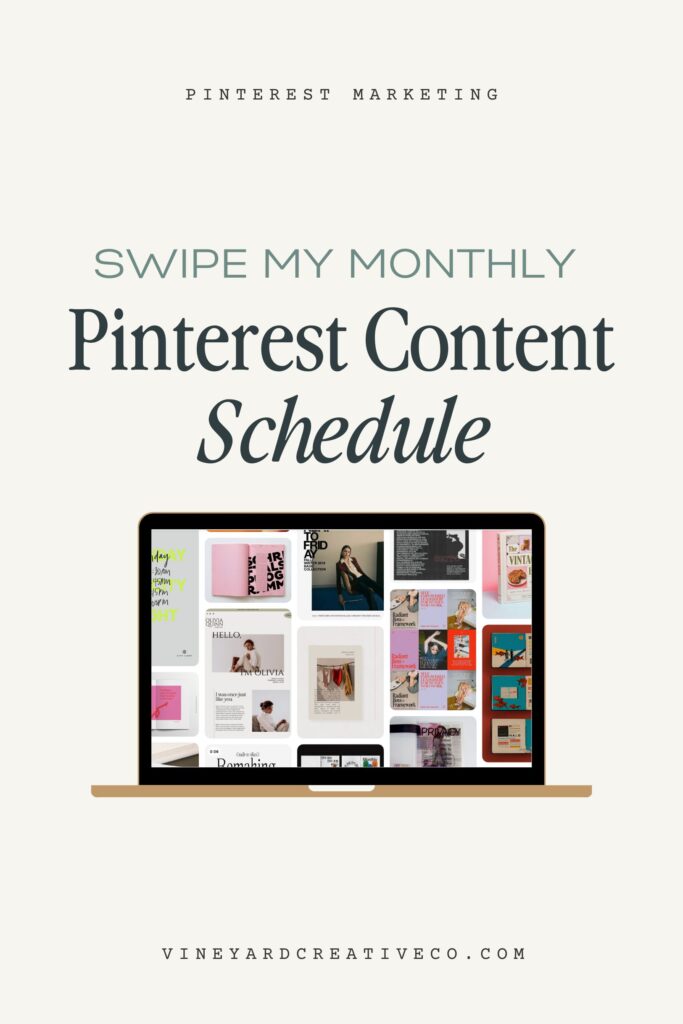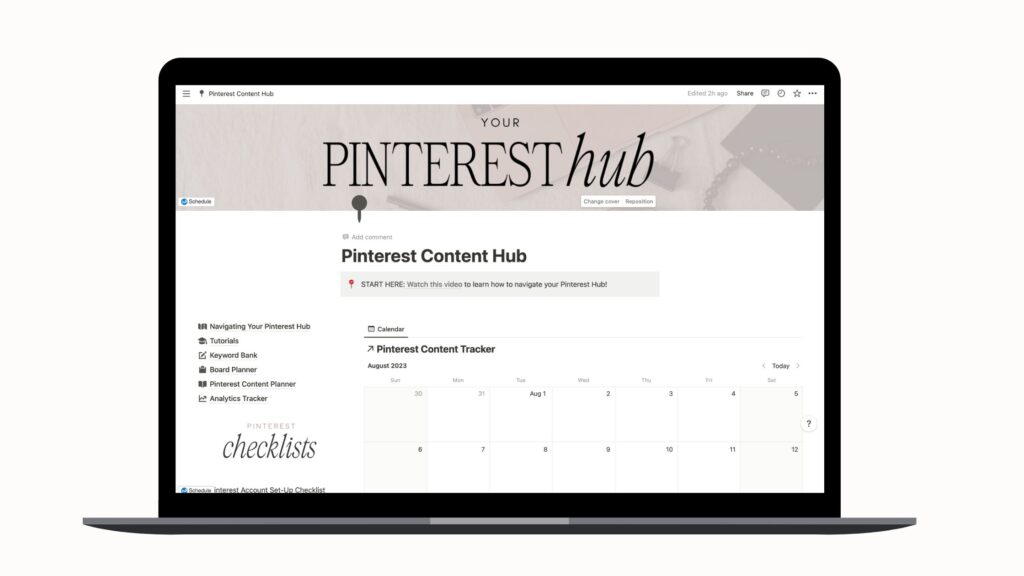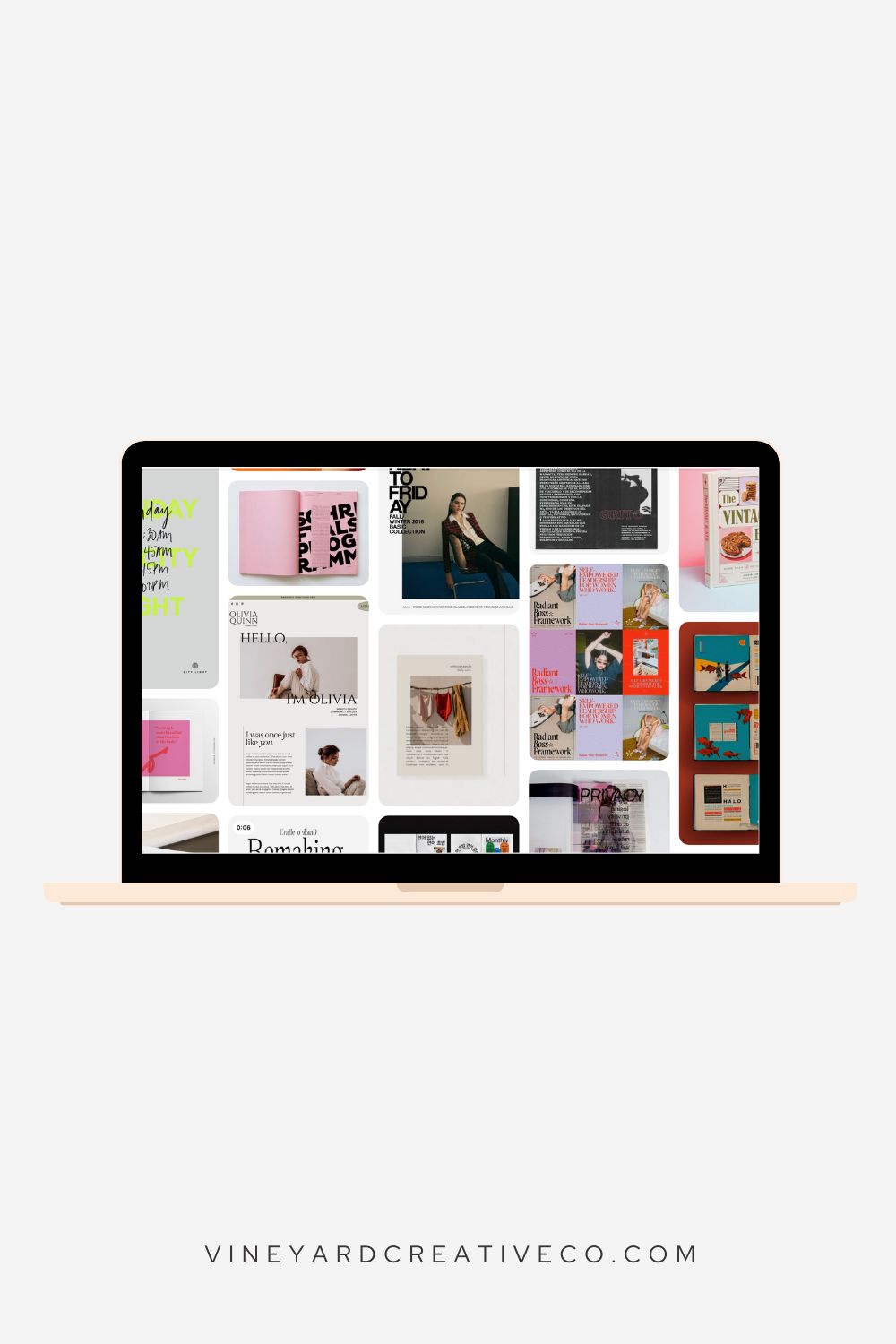Your resident Showit brand and web designer. I've helped dozens of creatives stand out online and create a sustainable digital presence.
I'm Laurel.
MY FAVORITE RESOURCES
WORK WITH ME
Browse the SHOP
Maybe you’ve set up your profile and even done a bit of Pinterest keyword research, but now you’re wondering “what in the world do I actually PIN on Pinterest? What belongs there? Could I get, a content plan or something?”. I’ve got you friend. I’ve put together some sample content schedules for those ready to start pinning regularly, with some specific examples for various niches.
Before we dive into specific schedules, let’s talk about the WHAT you should be pinning.
📌 Pin it for later 👇

Blog Posts
You may have heard it a million times, but Pinterest and Blogging go together like Chicken Strips and Chick-fil-a sauce. Tea and Lemonade. Taylor Swift and Travis Kelce.
Blog posts are your chance to answer questions and provide value to a brand new audience that’s finding you for the first time on Pinterest. Blog posts are not only a way to boost your website SEO, they make great pillar content to repurpose on other platforms like email, social media, and you guessed it: Pinterest. Your blog content will vary based on your niche, but here’s a few blog post ideas to get you started:
- Give a step-by-step tutorial on how to do something (ex: create a moodboard, clean with essential oils, plan their engagement session outfits etc.)
- Give a list of your favorite tools/resources that help you do x. Check out mine here!
- Review a specific tool or resource (this is a a great place to include affiliate links if applicable!)
- 3 Mistakes People Make When (Creating their website, DIY-ing their interior design, selling their home etc.)
- Portfolio pieces/client showcase/case studies. These are especially great for brand and web designers to link images of their work to!
- If you podcast, repurpose your podcast episodes into blog posts!
Your blog posts are a chance to link to other resources and blog posts on your site, as well as lead into your free resource or lead magnet to get them on your email list. You also have an opportunity to pitch your DFY services, course, membership, or other offers at the end. Blog posts help position you as an AUTHORITY in your field, build brand recognition, and give them lots of value so they’re more likely to get on your email list and find out more about what you offer that could help them with their problem.
Freebies and Opt-Ins/Lead Magnets
If you don’t have one already, make sure you have some type of free resource to share with your new audience to entice them to join your mailing list. This could be a workbook, template, PDF guide, masterclass, challenge, or even a mini course. Give them a quick win and lots of value. This builds trust and leaves them wanting more! Once you have a great freebie created, build a landing page for it on your website that you can link to. Include enough information to entice someone and give them a taste of what’s inside, and make it easy for them to sign up right there! You can check out my Pinterest Strategy Guide and Showit Link-in-Bio Freebies for an example.
Product Pages
While I wouldn’t recommend linking directly to your high ticket course or group coaching program, physical products, low ticket digital offers and templates all tend to perform very well! 90% of weekly Pinterest users come to the platform while they are planning to make a purchase, so make sure that if you are showcasing something like template or ebook, you are linking it to the correct page and making it super easy for them to buy!
What NOT to Pin
While you can technically link anywhere, I always recommend pinning to your own domain, aka your website, as opposed to anything hosted on another website-think Flodesk opt-in forms, link trees, social media posts, Youtube videos, etc. Pinterest prioritizes content linked to your claimed domain, so you may notice that pins linked elsewhere don’t perform quite as well. You also want to make sure you are pinning to useful content that will nurture the user into continuing the journey with you. NEVER link to your home page, as it puts you at risk for getting marked as spam.
Pinterest Content Schedule Examples
These content plans are based on pinning approximately 3 times a day for one month-the recommended schedule I go by for my clients! Feel free to choose fewer pieces of content or spread them out further so you don’t have to pin as often, or kick it up and pin 5-6 times a day if you like!
- Choose 6 URLs based on the below examples.
- Create 4 pin graphics for each blog post/freebie/product (24 total)
- Write 4 pin titles and descriptions for each pin graphic
- Download all your pins from Canva
- Rename your file names to a keyword (ex: Pinterest-Marketing-Tips-1.jpg)
- Upload your graphics to Pinterest or Tailwind and Copy and Paste in the Correct Titles and Descriptions
- Schedule according to the “waterfall method” (video below!)
Coaches or Service Providers
Choose a mix of blog posts, free resources and product pages (if you have any).
Photographers and Wedding Pros
Choose a mix of educational and portfolio blog posts. If you’re running out of unique links, you can link to portfolio pages or experience pages.
Brand and Web Designers
Choose a mix of educational and portfolio blog posts, freebie opt-ins, and template/digital product pages (if you have them)
Podcasters
Choose a mix of podcast episodes (repurposed into blog posts-don’t link to the podcast in apple or another hosting platform), freebie opt-ins, and digital products (if you have them).
Scheduling Techniques for Pinterest and Tailwind
This method helps me stretch my content so that it all appears “fresh” to Pinterest without having to create a million graphics!
Keeping Your Content Organized
I like to use Notion to organize my Pinterest content (I have a template for this in my shop!), but you can also use Google Drive and Airtable. Here are the main things I plan out when batching my content:
- Pin Titles and Descriptions for Each Post/URL
- Link to Canva Graphics
- Keywords Used
- Exact URLs I’m Pinning To
- How Many Times I’ve Pinned that URL (make sure you are not pinning it more than once per day, and give it a rest every once in awhile!)
- Scheduling Status (Planning, Needs Graphic, Needs Description or Scheduled)

Looking to Hire a Pinterest Manager?
I offer full management as well as al a carte pin copy and scheduling to help you get the most out of your content (without having to plan, SEO-optimize and organize it yourself!). I’d love to chat with you about how we can expand your brand’s visibility and grow your organic traffic on Pinterest! Submit a quick application here and I’ll be in touch!
Swipe My Monthly Pinterest Content Schedule
February 21, 2024
Date published:
Filed under

AFFILIATE DISCLOSURE
Some links across my website may be affiliate links, meaning I receive a portion of any sales made through them. I never recommend any product or service that I don't wholeheartedly believe in and use in my own business.
Leave a Reply Cancel reply
LOVE What You Just Read?
☕️ buy me a virtual coffee!
I love supporting you with free resources like this! Keep the creativity going and throw some caffeine my way if you want 😉
The Newsletter that
you'll actually want to open
Each week I share design and marketing tips, a roundup of my favorite resources, and an inside look at entrepreneurship the slow way.
get weekly growth tips in your inbox
work with me learn from me
Vineyard creative co is a brand, web design and marketing agency serving creative service providers. Based in Cincinnati Ohio, serving clients worldwide.
student login
Join the Slow Growth Club
weekly sustainable marketing tips, trends and heart-to-hearts from one creative to another
Hi Laurel! Thank you so much for sharing your strategy. The waterfall method is a game changer! I just have one question: Do you use the exact same boards for pin A, pin B, pin C, and pin D in the exact same order? Like, if you have 3 relevant boards called x, y, and z: pin A goes in board x, y, z and the exact same goes for pins B, C, and D in the waterfall? Or do you need to switch up the boards? Thanks in advance for your input!
Hi Sarah! It depends on the number of relevant boards I have that will fit with the pin topics. If I only have 4 and I have the 4 unique pins, I’ll just use those, but I don’t worry about the exact order! If I have 4 pins and only 3 relevant boards, I will repeat boards! I do recommend trying to have at least 4-5 boards per topic with high-ranking keyword titles so you can test out different pin-to-board relationships! Hope that helps!